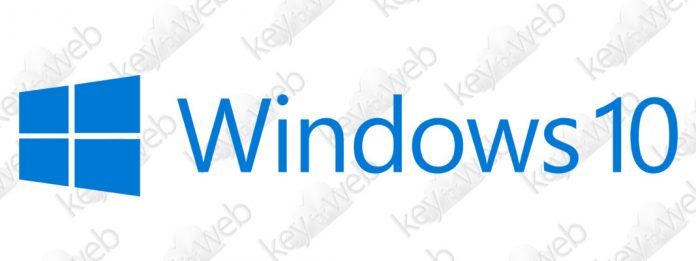Microsoft rilascia il nuovo aggiornamento Windows 10 Fall Creators Update KB4074588
Puntuale come ogni secondo martedì del mese, Microsoft rilascia il nuovo aggiornamento Windows 10 di febbraio 2018 con diversi miglioramenti di sicurezza ed alla stabilità di sistema.
Nello specifico, alcune ore fa Microsoft ha iniziato la distribuzione su scala globale delle nuove patch di febbraio 2018 per le varie versioni di Windows 10 rilasciate nel corso degli ultimi anni.
Windows 10 aggiornamento KB4074588
Come anticipato, il nuovo aggiornamento conosciuto con il nome in codice KB4074588 per Windows 10 Fall Creators Update porta con se miglioramenti alla stabilità di sistema, alla sicurezza ed alla esperienza d’uso di Windows 10.
Questo il changelog completo (in lingua inglese) delle novità introdotte con la KB4074588:
- Addresses issue where child accounts are able to access InPrivate mode on ARM devices even though their browsing and search history is sent to their parents. This occurs only on Microsoft accounts belonging to children that are managed using the Microsoft Family service and for which parents have enabled activity reporting. This applies to Microsoft Edge and Internet Explorer.
- Addresses issue with docking and undocking Internet Explorer windows.
- Addresses issue in Internet Explorer where pressing the delete key inserted a new line in input boxes in an application.
- Addresses issue in Internet Explorer where selected elements wouldn’t update under certain circumstances.
- Addresses issue where some users may have experienced issues logging into some websites when using third-party account credentials in Microsoft Edge.
- Updates time zone information.
- Addresses issue with browser Compatibility View settings that occurs during updates.
- Addresses issue where, in certain hardware configurations, the frame rates of DirectX Games were unintentionally limited to a factor of the display’s vertical synchronization.
- Addresses issue that causes delays when switching keyboard languages using Alt+Shift.
- Addresses issue where surround sound audio endpoints reverted to stereo after restarting.
- Improves and reduces conditions where certain Bluetooth keyboards drop keys during reconnection scenarios.
- Corrects mouse delays for devices that incorrectly report the battery level status.
- Addresses issue where MMC application snap-ins—such as Services, Local Policy Admin, and Printer Management—fail to run when Windows Defender Application Control (Device Guard) is turned on. The error is “Object doesn’t support this property or method”.
- Prevents use of the Pre-production Onesettings endpoint for Windows Setup when test signing is enabled.
- Addresses issue where installations of Windows Server, version 1709 are not automatically activated using the Automated Virtual Machine Activation (AVMA) feature on Hyper-V hosts that have been activated.
- Addresses issue with the Auto-register Inbox templates feature for UEV where the Scheduled Task didn’t have the proper trigger.
- Addresses issue where the App-V client didn’t read the policy for SyncOnBatteriesEnabled when the policy was set using a Group Policy Object (GPO).
- Addresses issue where the Supported On field for the Enable App-V Client policy is blank in the Group Policy editor.
- Addresses issue where the user’s hive data in the registry is not maintained correctly when some App-V packages belong to the connection group.
- Provides additional logging for administrators to take action, such as picking a proper configuration for their App-V package, when there are multiple configuration files for a single package.
- Addresses issue with App-V packages that aren’t compatible with registry virtualization using kernel containers. To address the issue, we changed the registry virtualization to use the earlier (non-container) method by default. Customers who would like to use the new (kernel container) method for registry virtualization can still switch to it by setting the following registry value to 1:
- Path: HKEY_LOCAL_MACHINE\SOFTWARE\Microsoft\AppV\Client\Compatibility
- Setting: ContainerRegistryEnabled
- DataType: DWORD
- Security updates to Microsoft Scripting Engine, Microsoft Edge, Internet Explorer, Microsoft Windows Search component, Windows Kernel, Windows Authentication, Device Guard, Common Log File System driver, and the Windows storage and file systems.
Il nuovo aggiornamento è disponibile direttamente via OTA dai dispositivi interessati, semplicemente recandosi in Tutte le Impostazioni -> Aggiornamento e sicurezza -> Verifica disponibilità aggiornamenti.
Nel caso non riusciate o possiate scaricare tramite Windows Update la KB4074588, potete effettuare il download manuale dal link sottostante, per poi procedere all’installazione manuale.
Download KB4074588 per Windows 10 FCU
Windows 10 aggiornamenti pre FCU
A seguire troverete i link ai changelog ed al download diretto dal catalogo Microsoft degli aggiornamenti per le versioni antecedenti Windows 10 Fall Creators Update:
- Versione 1703 “Creators Update”
build 15063.909, patch KB4074592 | Changelog | Download - Versione 1607 “Anniversary Update”
build 14393.2068, patch KB4074590 | Changelog | Download - Versione 1511 “November Update”
build 10586.1417, patch KB4074591 | Changelog | Download - Versione 1507 “Initial release”
build 10240.17741, patch KB4074596 | Changelog | Download


